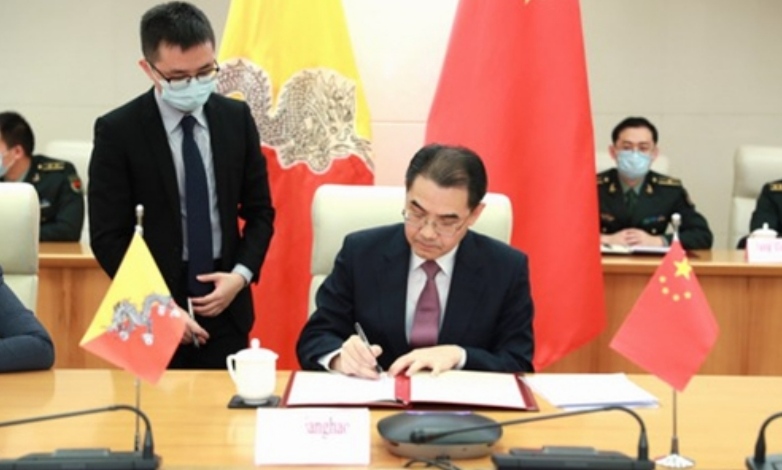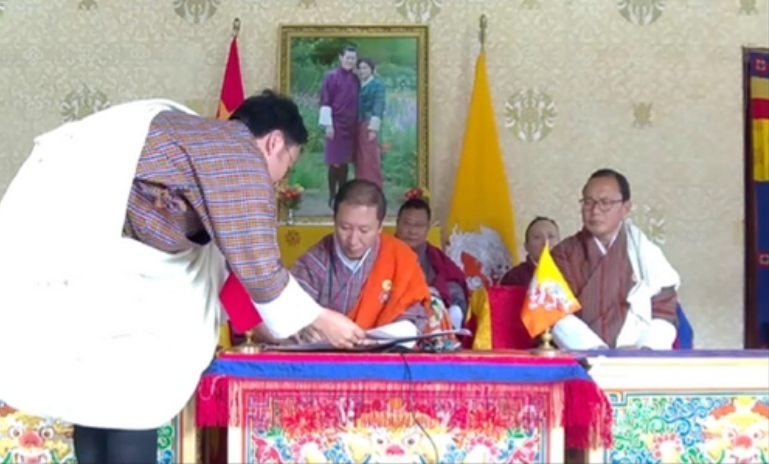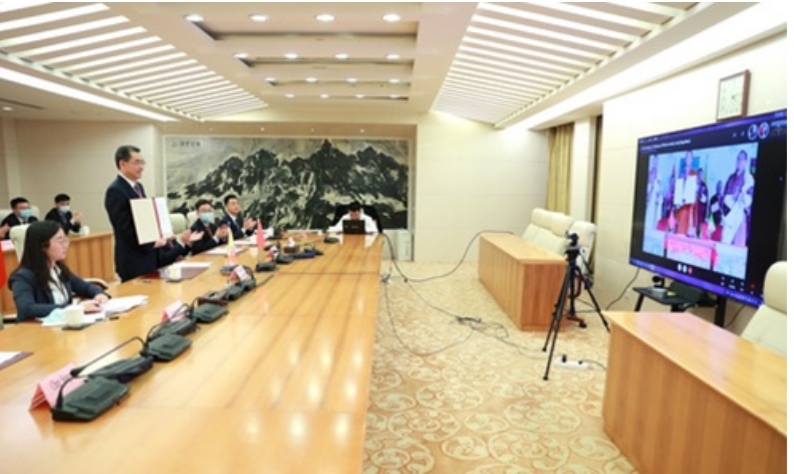China, Bhutan sign MoU for expediting boundary talks

During a meeting held via video on Thursday, China and Bhutan signed a Memorandum of Understanding (MoU) on a Three-Step Roadmap to help speed up boundary talks that have been delayed. The MoU is of historic significance and is the result of India’s tough stand on the subject. Thus the Chinese have been forced to change their stance and go for cooperation with Bhutan on the boundary issue.
The Assistant Minister of Foreign Affairs of China, Wu Jianghao, and the Foreign Minister of Bhutan, Lyonpo Tandi Dorji, signed the MoU on the Three-Step Roadmap for Expediting the Bhutan-China Boundary Negotiations at the virtual signing ceremony.
Wu said China and Bhutan are friendly neighbors linked by mountains and rivers. The traditional friendship between the two peoples goes back to ancient times. It is expected that the MoU will make a meaningful contribution to speed up the negotiation on demarcation and promote the process of establishing diplomatic ties between the two countries.
“China will follow Xi Jinping Thought on diplomacy, follow the neighborhood diplomacy featuring amity, sincerity, mutual benefit and inclusiveness, and be a good neighbor, friend and partner of Bhutan on the principles of equality and peaceful coexistence,” Wu said.

Foreign Minister of Bhutan, Lyonpo Tandi Dorji said that Bhutan will work with China to implement the MoU and push forward the negotiation on demarcation and be committed to strengthening bilateral relations.
According to a press release published by Bhutan’s Ministry of Foreign Affairs, it is expected that the implementation of this roadmap, in a spirit of goodwill, understanding and accommodation, will bring the boundary negotiations to a successful conclusion that is acceptable to both sides. The MoU will be exchanged between the two sides through diplomatic channels.
Boundary negotiations between China and Bhutan began in 1984 and the two sides have held 24 rounds of Boundary Talks and 10 rounds of meeting at the Expert Group level. The negotiations, which have been conducted in a spirit of understanding and accommodation, have been guided by the 1988 Joint Communique on the Guiding Principles for the Settlement of the Boundary and the 1998 Agreement on the Maintenance of Peace, Tranquility and status quo in the Bhutan-China Border Areas, according to the press release.
In 2018, China had once again tried its salami slicing tactics but failed miserably due to tough stand taken by Bhutan with full backing of India.
Now during the 10th Expert Group Meeting in Kunming in April this year, the two sides agreed on a Three-Step Roadmap that will build on the 1988 Guiding Principles and help to expedite the ongoing boundary negotiations. The MoU on the Three-Step Roadmap will provide a fresh impetus to the boundary talks, the press release said.

In April, China and Bhutan agreed to continue to maintain peace and stability in the border areas before the final settlement of the China-Bhutan boundary issues. The agreement was reached during the 10th China-Bhutan expert group meeting on boundary issues in Kunming. The Director-General of the Department of Boundary and Ocean Affairs of the Foreign Ministry, Hong Liang, led the Chinese delegation.
Experts said that the meeting shows China’s willingness to manage border affairs because now it knows that it cannot get away with its unilateral actions. A very tough stand taken up by India has forced the Chinese to end their territorial disputes between China and Bhutan. This is quite a significant move and shows that even the border issue on the Tibet India boundary issue can also be resolved in time to come.




